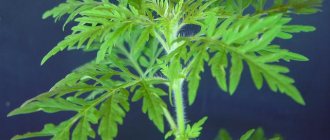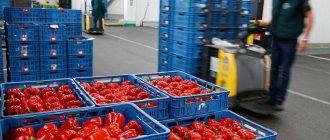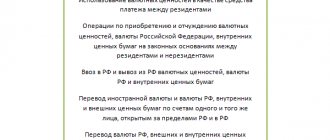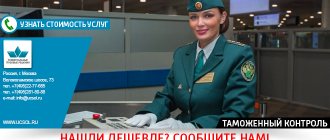The Russian government has approved a new Regulation on phytosanitary supervision (control) by state bodies. The document became a valid regulatory act on September 11, 2021. It contains several innovations that were not included in the abolished rules for conducting supervisory activities applied since 2013 (based on Government Resolution No. dated January 31, 2013). In particular, Rosselkhoznadzor has ceased to be the only body exercising quarantine phytosanitary control.
Legislative regulation of quarantine phytosanitary supervision
According to Article 7 of Law No. 206-FZ of July 21, 2014, the procedure for carrying out phytosanitary surveillance measures is determined by the Russian Government. It is approved by the relevant resolution of the Cabinet of Ministers. Quarantine phytosanitary control and supervision is organized in relation to plant products transported across the border of the Russian Federation in order to prevent the penetration of dangerous agricultural pests and pathogens of various diseases into the country. State phytosanitary control can be carried out in other places where quarantine points for plants are equipped, the list of which is approved by Rosselkhoznadzor. Also, regulated products are checked during their circulation in Russia, in places of storage and processing.
The regulations on veterinary and phytosanitary supervision are two separate documents, since they deal with different types of control:
- Decree of the Government of the Russian Federation No. 476 dated June 05, 2013 regulates the procedure for organizing veterinary state supervision (aimed at preventing diseases among animals, monitoring compliance with mandatory requirements for goods subject to state veterinary supervision);
- Decree of the Government of the Russian Federation No. 1304 dated August 29, 2020 established new rules for phytosanitary control, which came into force on September 11, 2020 (this type of state supervision ensures the identification of harmful organisms in plants, plant products and other regulated products, as well as regulated objects - clause 7, Clause 29, Article 2 of Law No. 206-FZ).
The main department involved in state phytosanitary control is Rosselkhoznadzor (clause 5.1.4 of Government Resolution No. 327 of June 30, 2004). However, some activities for veterinary and phytosanitary supervision are carried out jointly by Rosselkhoznadzor and other departments.
Thus, according to the new rules of phytosanitary control, when moving regulated plant products across the Russian border, inspectors of the Federal Service for Phytosanitary and Veterinary Surveillance check them together with customs officers (clause 3 of Government Decree No. 1304 of 08/29/2020). In the abolished Regulations, customs officers did not have such powers. When importing phytoproducts, compliance with internal quarantine requirements is monitored, harmful organisms are identified, and their entry into the territory of the Russian Federation is prevented. When they are exported to other states by legal entities or individual entrepreneurs, customs authorities and Rosselkhoznadzor carry out phytosanitary supervision to assess the compliance of the transported products with the legislation of the importing countries (clause 2 of Government Decree No. 1304).
Phytosanitary control during customs clearance
The list of goods subject to phytosanitary control when imported into the territory of the Customs Union is established by the Decision of the Customs Union No. 318 of June 18, 2010. This list includes seeds, tubers, cut plants, fruits and vegetables, flour, cereals, wood shavings, wood chips, unprocessed wood and other plant products. Rosselkhoznadzor may also establish additional temporary restrictions on the import of goods of certain categories, manufacturers, and from certain countries. You can go through control only at checkpoints where Rosselkhoznadzor specialists work. The inspection is organized in two main stages: primary and secondary supervision.
Primary supervision is the main check that determines whether the cargo complies with the general phytosanitary requirements given in the decision of the EEC Council No. 157 of November 30, 2016. Secondary supervision is carried out upon completion of customs clearance before the release of the consignment.
Primary supervision is carried out by an inspector from Rosselkhoznadzor. It controls:
- availability and correctness of execution of accompanying documents (including phytosanitary certificate);
- condition of the cargo, vehicle (they are inspected, checked that there are no traces of infection by insect pests, viruses, bacteria, fungi).
Products may be subject to additional testing in an accredited laboratory. For some products such examinations are mandatory. In other cases, they may be appointed after inspection of the cargo.
If a Rosselkhoznadzor inspector detects signs of contamination of the cargo, it is detained and placed in a quarantine zone. Such cargo may be subject to decontamination, return to the exporter, or destruction. All these operations are performed at the expense of the importer.
During secondary inspection, the cargo is inspected again, accompanying documents and examination results are checked.
The phytosanitary certificate accompanying imported products is issued in the exporting country (it is issued by the supplier or manufacturer). When exporting goods from Russia, you must issue a phytosanitary certificate in accordance with the requirements approved by Order of the Ministry of Agriculture No. 478 dated October 27, 2016.
After inspection and phytosanitary control of the imported cargo, a quarantine certificate is issued for it. This document allows the import of regulated products into the territory of the Customs Union, as well as its movement. It is issued separately for each imported consignment based on the conclusion on the quarantine phytosanitary state of regulated products and the importer’s application. The conclusion is issued by the Rosselkhoznadzor inspector after checking the batch.
In accordance with Art. 7 of the Federal Law of July 21, 2014 No. 206-FZ (as amended on December 29, 2020) “On Plant Quarantine”, the procedure for implementing state quarantine phytosanitary control (supervision) is established by the Government of the Russian Federation.
Resolution of the Government of the Russian Federation dated August 29, 2020 No. 1304 approved the “Regulations on state quarantine phytosanitary control (supervision)” (hereinafter referred to as the Regulations).
According to paragraph 2 of the Regulations, state supervision is carried out in order to ensure compliance with quarantine phytosanitary requirements, prevent and suppress violations of the requirements of legislation of the Russian Federation in the field of plant quarantine, including by identifying quarantine objects in regulated products, at regulated facilities.
State supervision is carried out by the Federal Service for Veterinary and Phytosanitary Surveillance - on the territory of the Stavropol Territory - by the Rosselkhoznadzor Office for the Stavropol Territory and the Krachay-Cherkess Republic - through measures to prevent violations of the mandatory requirements of the legislation of the Russian Federation in the field of plant quarantine and other means.
When conducting inspections, state supervisory authorities can conduct quarantine phytosanitary inspection, inspection, inspection of regulated products, as well as research, testing, measurements, and examinations in accordance with the legislation of the Russian Federation in the field of plant quarantine.
Paragraph 7 of the Regulations stipulates that in order to apply a risk-based approach in the implementation of state supervision, the activities of legal entities and individual entrepreneurs who have regulated objects on the right of ownership or other legal basis, and (or) the activities of legal entities and individual entrepreneurs engaged in production, import , export, storage, transportation and sale of regulated products are subject to classification into one of the risk categories in accordance with the “Rules for classifying production facilities used by them to a certain risk category or a certain hazard class” approved by Decree of the Government of the Russian Federation dated August 17, 2016 No. 806 “On the application risk-based approach in organizing certain types of state control (supervision) and introducing changes to certain acts of the Government of the Russian Federation.”
Taking into account the “Criteria for classifying objects of state quarantine phytosanitary control (supervision) as risk categories,” objects of state control are divided into categories of medium, moderate and low risk.
The medium risk category includes the activities of legal entities and individual entrepreneurs in the cultivation of seed and planting material, carried out not in the quarantine phytosanitary zone; grain storage activities. The moderate risk category includes: the activities of legal entities and individual entrepreneurs using technologies that ensure that quarantine objects are deprived of their viability; activities of organizations carrying out laboratory research in the field of plant quarantine.
Before a decision is made to classify an object of state supervision as a moderate or medium risk, it is considered to be classified as a low risk. The frequency of scheduled inspections depends on the category of a certain risk - for the medium risk category - once every 4 years, for the moderate risk category - no more than once every 5 years, for objects classified as low risk, scheduled inspections are not carried out.
How to obtain a phytosanitary stamp (spikelet)
How to obtain a phytosanitary stamp (spikelet)
Wood obtained from living trees or dead wood may be infested with pests. To prevent the threat of the spread of these organisms, phytosanitary treatment of containers and packaging material made from wood is used. Wood packaging material that has undergone phytosanitary treatment is identified by applying an official marking. This marking consists of a special symbol (“spikelet”) used in conjunction with codes identifying the specific country, the responsible manufacturer or organization that carried out the processing and the type of processing performed. The phytosanitary mark indicates that the wood packaging material has been subjected to an approved phytosanitary treatment and is the basis for allowing the import of wood packaging material without additional special requirements. The phytosanitary mark was first adopted and standardized at the fourth session of the Interim Commission on Phytosanitary Measures in March 2002 under the title Guidelines for the Regulation of Wood Packaging Materials in International Trade. After several amendments and revisions, ISPM 15 was adopted in 2009 and is the standard used today. In the Russian Federation, the body responsible for phytosanitary control is Rosselkhoznadzor. It is he who licenses the production of wood packaging material, its phytosanitary processing and labeling. After successfully completing the licensing process, on the basis of an application for the issuance of a special sign of international standard for marking wood packaging and cement materials when exported from the Russian Federation, the organization is entered into the register of owners of special signs with the assignment of an individual number. An act of checking the compliance of the conditions and technology of fumigation treatment with the established norms and rules is also drawn up.
Based on this document, you can begin making a phytosanitary mark for burning on pallets and other containers. It can be made of brass or steel. Send a scan of this document to our email. The designer will draw a layout of the mark and provide it in 3D form for clarity. It is worth noting that ISPM 15 does not clearly describe the size, type of font or proportions of the phytosanitary mark. It must be of sufficient size to be visible and legible to inspectors without the use of visual aids. This marking must be rectangular or square in shape and located within a frame with a vertical line separating the IPPC symbol from the code elements.
There should not be any extraneous information inside the marked frame. If, to protect the use of the marking, it is advisable to apply additional markings (for example, manufacturer’s trademarks, logo of the authorized body), then such information can be located adjacent to, but outside the boundaries of the phytosanitary mark. The markings must be legible, durable and non-transferable, and located in a location visible when the wooden container is in use, preferably on at least two opposite sides of the wood packaging material unit.
After approval of all the details, we begin manufacturing cliches in metal.
For high-quality and long-lasting work, we have developed, certified and launched the production of specialized heaters for stamps.









